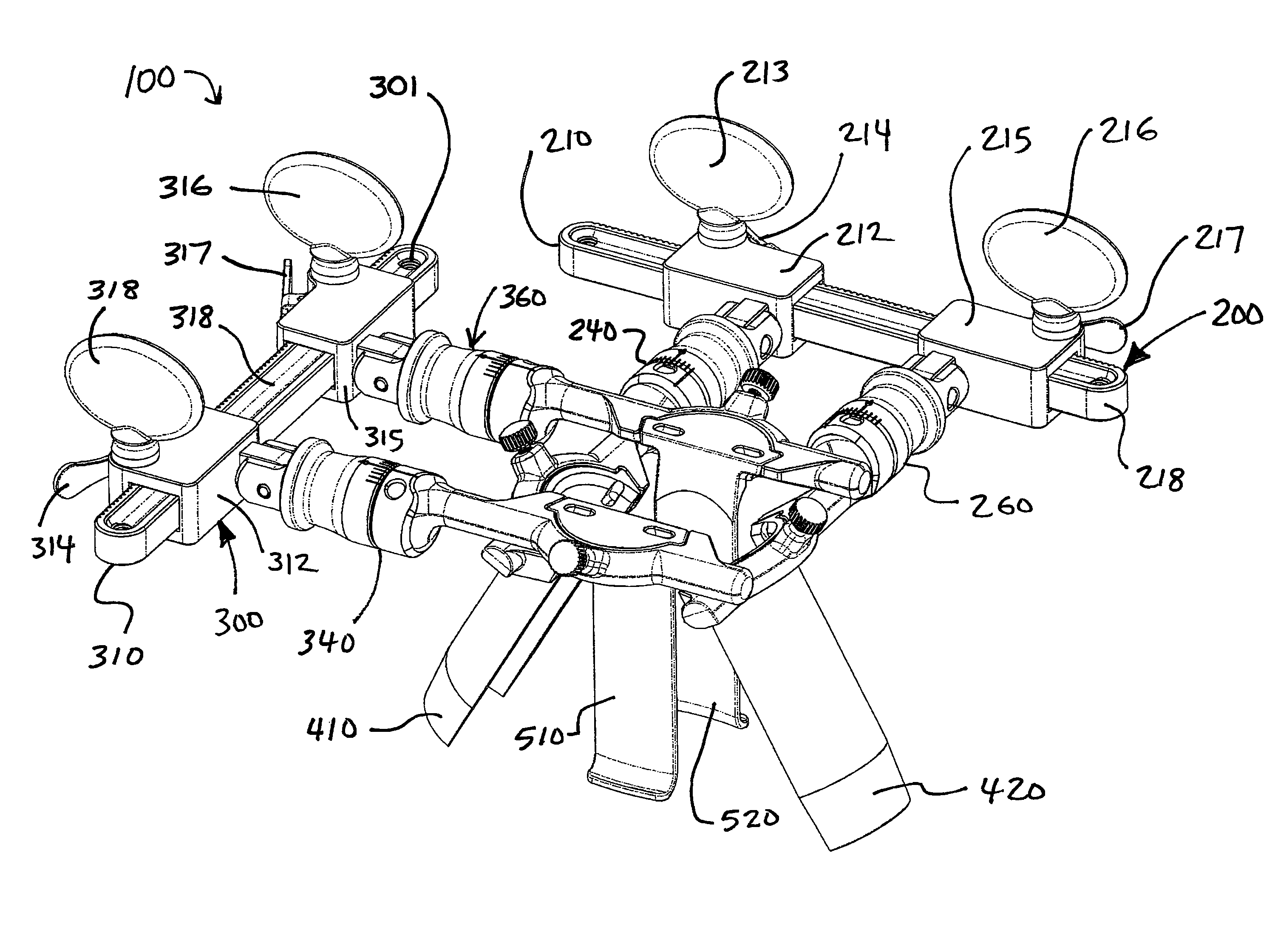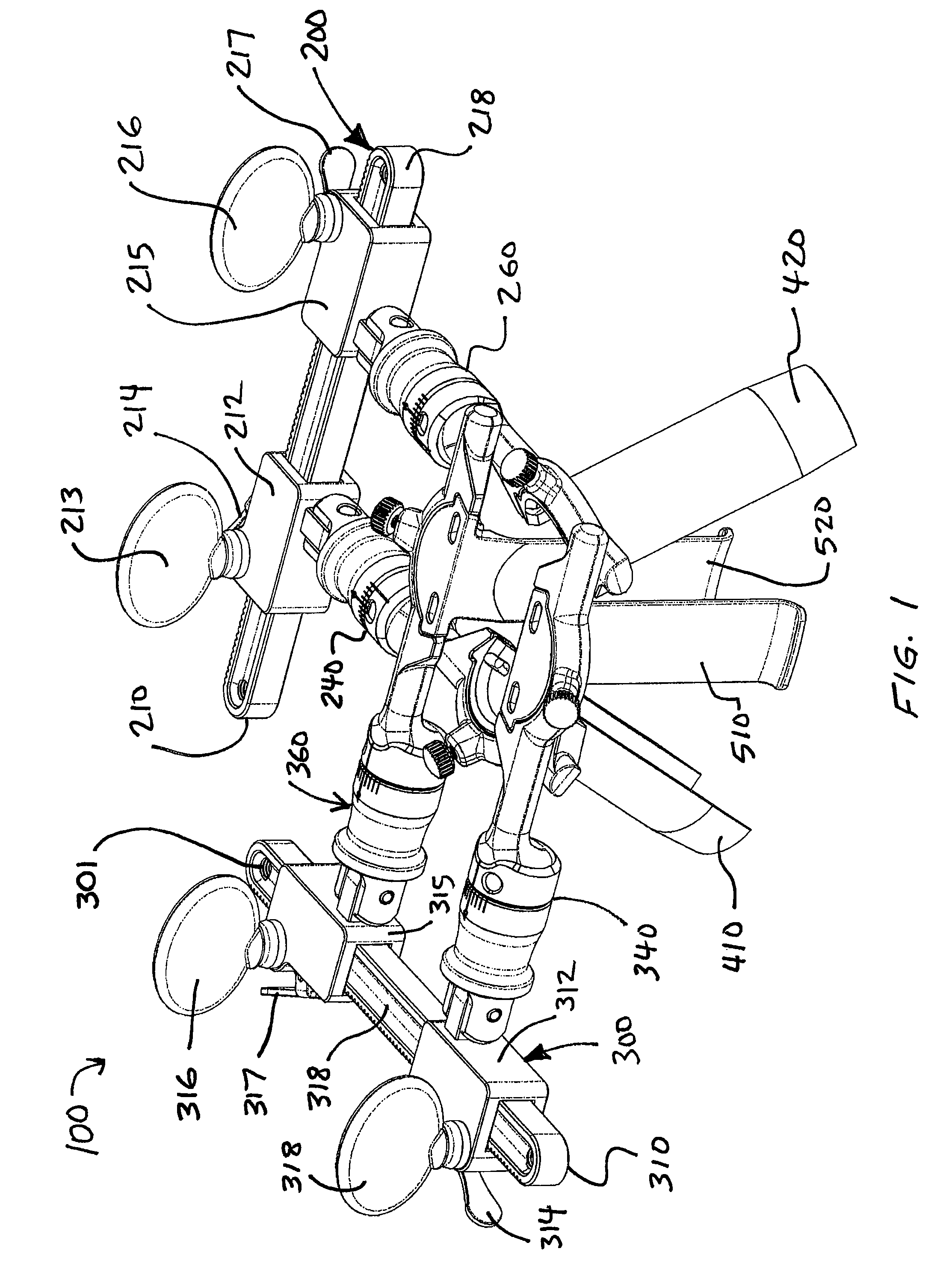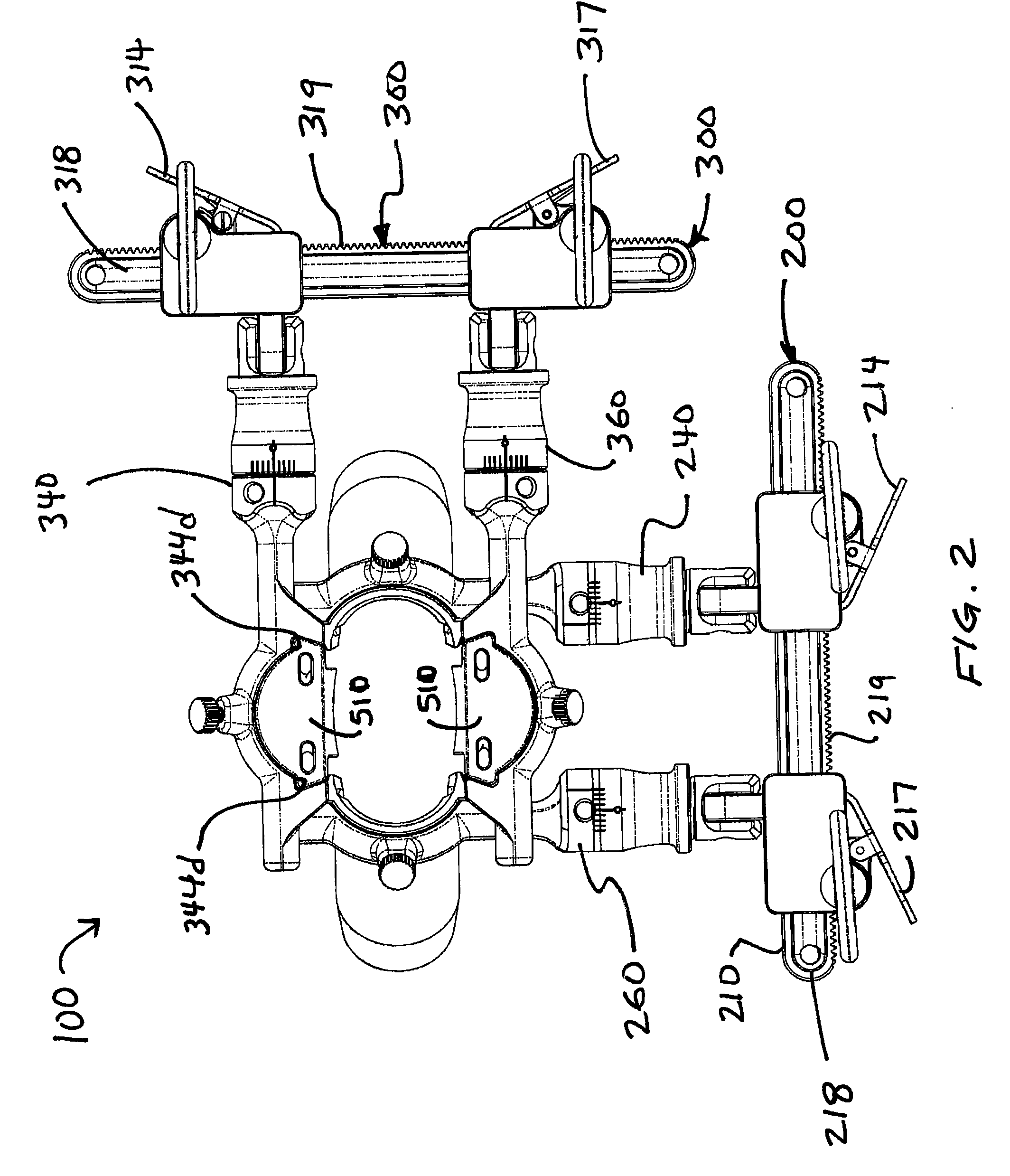Tissue retractor system
a retractor and tissue technology, applied in the field of tissue retractor systems, can solve the problems of increasing the risk of complications from surgery and longer recovery time, increasing the risk of complications, and reducing the range of motion of components, so as to reduce the size of the incision, and minimize the effect of the first incision siz
- Summary
- Abstract
- Description
- Claims
- Application Information
AI Technical Summary
Benefits of technology
Problems solved by technology
Method used
Image
Examples
Embodiment Construction
[0039]Although the invention is illustrated and described herein with reference to specific embodiments, the invention is not intended to be limited to the details shown. Rather, various modifications may be made in the details within the scope and range of equivalents of the claims and without departing from the invention.
[0040]Referring now to FIG. 1, a retractor assembly or “mini-retractor”100 is shown in accordance with a first exemplary embodiment of the invention. Retractor assembly 100 includes a first retractor unit 200 and a second retractor unit 300 placed on top of the first retractor unit in a stacked or nested arrangement. The pair of retractor units cooperate with one another while working independently to control the size and shape of an incision. As will be explained in more detail below, first retractor unit 200 can be operated by itself within an incision, or accompanied by the second retractor unit 300 if deemed necessary by the surgeon. If operated alone, the fir...
PUM
 Login to View More
Login to View More Abstract
Description
Claims
Application Information
 Login to View More
Login to View More - R&D
- Intellectual Property
- Life Sciences
- Materials
- Tech Scout
- Unparalleled Data Quality
- Higher Quality Content
- 60% Fewer Hallucinations
Browse by: Latest US Patents, China's latest patents, Technical Efficacy Thesaurus, Application Domain, Technology Topic, Popular Technical Reports.
© 2025 PatSnap. All rights reserved.Legal|Privacy policy|Modern Slavery Act Transparency Statement|Sitemap|About US| Contact US: help@patsnap.com



